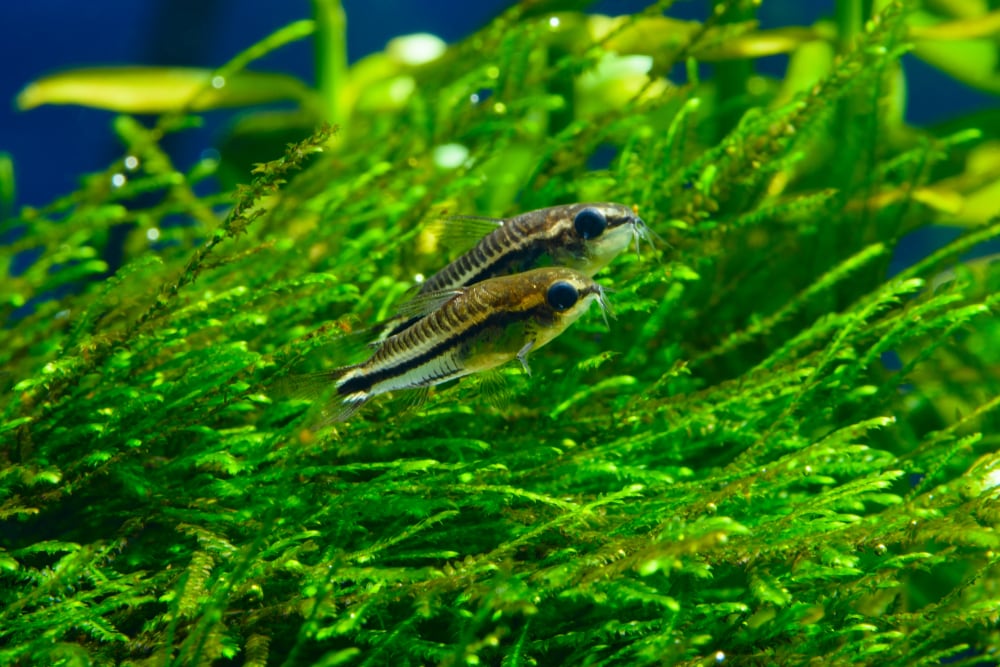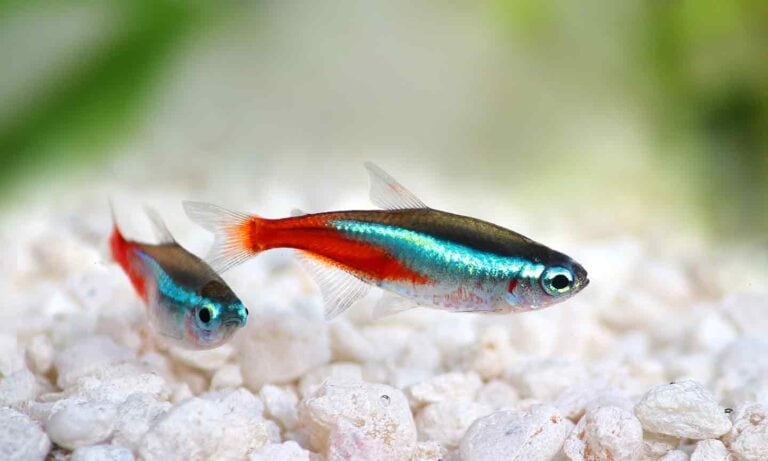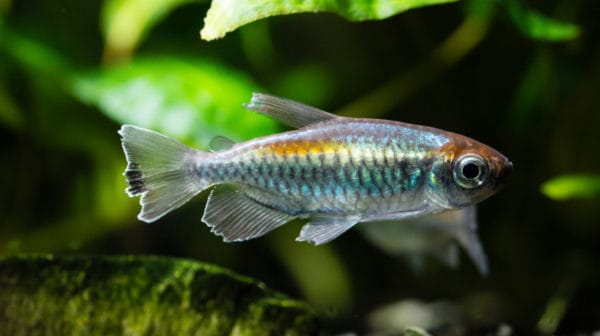The giant family of catfishes known as Corydoras is full of fish that all make perfect aquarium residents. In fact, it is probably one of the few families of fishes that doesn’t have a “black sheep” species that would be better off if left in the wild.
More than 95 percent of the known species in the genus have been kept at some point by at least a few hobbyists, and they have all been shown to be nearly perfect aquarium residents. Even the beginning hobbyist can easily meet the needs of most species, and nearly every hobbyist has at least a small group of them in their aquarium.
Some advanced aquarists even specialize just with cories. Some of the cories, such as Corydoras barbatus, are large and boisterous; these are better suited to a large aquarium with a lot of open floor space for swimming and rooting for tidbits of food. Others are smaller and more suited to small to medium sized aquariums. The pygmy cory (Corydoras pygmaeus) is one of those cories that would be happy even in the smallest of aquaria. A large male may barely reach seven-eighths of an inch, and a large female might be just under an inch and a quarter.
While pygmy cories are very popular with hobbyists, few keep them as they best prefer: as a very large school in a large, heavily planted aquarium, with a large area open for swimming. Unlike many other cories, the pygmies love to swim in mid-water. They spend much of their day scouring every nook and cranny in the fish aquarium searching for overlooked morsels of food. They also seem to enjoy “playing tag,” chasing each other around the aquarium. This probably has something to do with developing and maintaining social order in the group, and no harm is done. I’ve never even seen a torn fin in a group. It is also an endearing quality that most hobbyists can appreciate and is one of the qualities that keep them in demand.
Their coloration is pretty basic yet attractive. They are basically overall olive to golden brown, with a slightly darker shade above fading to a light cream color on the belly. There is a narrow black stripe running from the nose through the eye and along the lateral line to the caudal fin. There is often a slightly wider golden stripe above the black stripe. The black stripe gets slightly wider along the body and ends in a large diamond- shaped spot in the center of the caudal fin. This spot is sometimes surrounded with a thin black band. All other fins are clear, so the fish often seem to be just suspended in the water.
Coloration in both sexes is similar, but sexes can be easily distinguished. Females are much larger than males, up to nearly a half inch longer. In addition, their body size in overall proportions is much larger. An adult female is probably at least three times the weight of an adult male. Another easy method for determining sexes is to look at the ventral fins. In males, they are triangular. In females, they are paddle-shaped to more easily create a “pouch” to carry and deposit the eggs. This difference can be seen in even fairly young fish.
Corydoras pygmaeus is found over a fairly wide area in the wild, from tributaries of the Rio Madeira in Brazil to tributaries of the Rio Aquarico in Ecuador, to the Rio Nanay in Peru. This distribution in the wild exposes them to a variety of water conditions, so captive specimens also do well in a wide variety of water conditions. As long as extremes of pH and hardness are avoided, and the water is kept clean, the pygmies should do very well for you.
I keep my dozen or so breeders in a 10-gallon aquarium with very fine gravel on the bottom. The aquarium is filtered with a sponge filter with the air supply on full. The air stone churns the surface to keep the water well agitated and consequently well oxygenated. The aquarium is planted with a couple of large clumps of Java fern that reach nearly from the base to the top of the aquarium. They are attached to pieces of volcanic rock, which keeps them in place and allows me to move them from aquarium to aquarium as needed. There is also a large clump of Java moss in the aquarium.
The fish are fed newly hatched brine shrimp, pellet foods, finely crushed quality flake foods, chopped frozen bloodworms and small live worms (Grindal worms, young black worms, and young white worms). I feed twice a day, morning and evening. Usually, one feed is a live food, and the other is a prepared food. They seem to enjoy everything!
Spawning takes place over a couple of days, and it occurs regularly throughout the year, about every four to six weeks if conditions are right. The entire group usually participates, but each male seems to “stake out” an individual female, and he spawns only with her, chasing all other males away and returning to her. For that reason, the sexes in the group should be relatively equal in numbers.
As spawning begins, a group of males will chase a single female that is ready to spawn. A single male will out-compete the other males, and the newly formed pair will then move off from the group. Pairs will continue to form until all the members of one sex or the other are actively spawning.
Each pair will form a “T,” with the male forming the top of the “T” and the female forming the stalk. They will quiver, and the male releases his milt, and the female releases a single egg into her cupped ventral fins. The pair then moves out of the “T” formation, and the female searches for a place to deposit the eggs. The male keeps other males away and follows along.
The female will clean a spot on a leaf of the Java fern, the glass of the aquarium or even the sponge filter with her mouth, then carefully deposit the egg on that cleaned spot. She and the male may rest for a few minutes — if you look closely, you will see they are both breathing much more rapidly than normal.
After a brief rest, the pair will head off and repeat the process. Over the course of the spawning event, a female may lay up to 30 or so eggs. A large female may lay 50 or more, but most lay a much smaller group of eggs.
The parents don’t guard the eggs and don’t seem to be aware of them at all once they are laid. They don’t eat the eggs, nor will they eat the fry that hatch, making the aquarist’s job that much easier. The eggs will hatch in about three days, and the larvae will move into the plants for several days. After a week or so, you’ll notice tiny little tadpole-like critters darting around under the plants. Making the aquarist’s job easy again, the fry will eat the same foods as the adults, so special feeding is not required. In spite of this, to give the fry a good start, I’ll add Mikroworms to the fish’s diet for a few weeks. Both adults and fry will eat them. After a successful group spawn, lifting up the Java moss may send 100 or more tiny fry darting in all directions.
The fry look nothing like their parents. They are tadpole-shaped, with a couple of long barbels. They have a creamy whitish color, with five black bands. As they develop and become more “catfish-like,” the bands become spots on their back, and the adult stripe begins to develop along the lateral line. By the time they are 6 weeks old, they have adult coloration, even though they are only half an inch or so long.
With proper feeding and regular water changes, they are nearing adult size by eight weeks. I begin to remove the juveniles from the aquarium at this time. At this size, they are saleable, or I can move them to other aquariums. I do this to give the remaining fry more room to grow and to make sure everyone gets enough fish food.
If you’ve not yet kept this amazing and interesting little catfish, give it a try! Or if you keep it but have not yet had any spawn, step up to the challenge and give that a try! For an aquarium hobbyist, nothing can be more satisfying than looking at a nicely planted display aquarium and being able to watch a large school of fish that you raised swimming throughout the aquarium.
Posted by: Chewy Editorial
Share:









